By Matt Wolfe
October 7, 1913, the Highland Park Ford Plant becomes the first automobile factory in the world to utilize a moving assembly line.
Following the initial success of the Model T, Hall of Fame Inductee Henry Ford knew that, in order to grow his company, he would need greater manufacturing capacity than the Piquette Avenue Plant was capable of. This realization led him to hire fellow Hall of Fame Inductee Albert Kahn to design a new factory just up the road in Highland Park, MI.
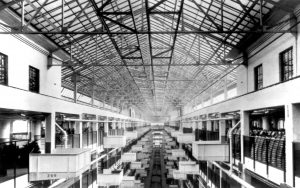
The Highland Park Ford Plant was completed in 1908 and shared a number of characteristics with another Kahn-designed factory in Detroit; the Packard Plant. The complex engulfed over 120 acres of land and, upon its opening, became the largest manufacturing facility in the world. The Highland Park Ford Plant would be the realization of Henry Ford’s long-held dream of achieving a more efficient means of production when the first moving automobile assembly line started up on October 7, 1913. Ford’s assembly line was a culmination of effort by many of his employees, including Hall of Famers Clarence Avery and William Knudsen. Both Avery and Knudsen studied and refined the concept of the assembly line and worked tirelessly to speed-up and streamline hundreds of assembly processes, which slashed the production time for a Model T from 728 minutes to just 93 minutes.
Well over a million Model T’s would roll out of the Highland Park Ford Plant over the next decade, and the plant would later produce the Fordson tractor as well as the M4A3 Sherman tank. Vehicle production was eventually shifted to the River Rouge complex, and Highland Park would slowly become dormant in the ensuing decades.
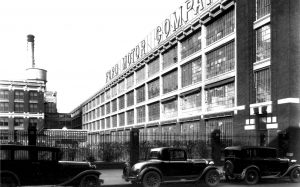
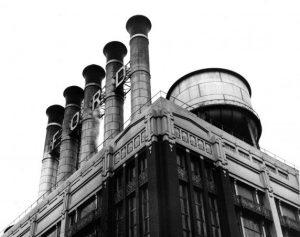
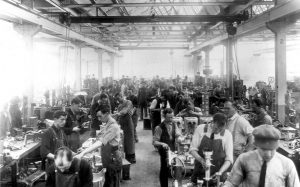
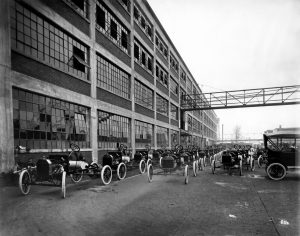
1914 Chassis at the Highland Park Plant: Model T chassis prep area outside of Ford’s Highland Park Plant.